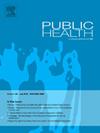Healthcare reimagined: Carebots from hospital to home
IF 3.2
3区 医学
Q1 PUBLIC, ENVIRONMENTAL & OCCUPATIONAL HEALTH
引用次数: 0
Abstract
Objectives
To explore how healthcare robots (carebots) are transforming care delivery across the continuum, from hospital to home, particularly in response to ageing populations, chronic disease burdens and healthcare workforce shortages.
Study design
A brief narrative grounded in the authors’ observations, professional experiences and selected literature.
Methods
This short communication draws on real-world insights and current trends to explore how carebots are used in hospitals and communities. It highlights their roles in nursing, rehabilitation, mobility and remote care, and examines key barriers, such as acceptance, cost, capability, safety and reliability.
Results
In hospitals, carebots improve efficiency, reduce staff workload and enhance patient outcomes. In homes and communities, they support ageing-in-place by improving mobility, offering cognitive support and enabling remote care. Although carebots have the potential to bridge the urban-rural healthcare divide, adoption remains low in resource-limited settings due to stigma, high costs, inadequate infrastructure and policy gaps.
Conclusions
To unlock the full potential of carebots in addressing global care gaps, focus should be on inclusive design, equitable investment, and supportive policies and training. Carebots can pave the way for more person-centred, tech-enabled healthcare across the entire care continuum, from hospital to home.
重塑医疗保健:从医院到家庭的护理机器人
目的探讨医疗机器人(carebots)如何在从医院到家庭的连续体中改变医疗服务,特别是在应对人口老龄化、慢性病负担和医疗人力短缺方面。研究设计以作者的观察、专业经验和精选文献为基础的简短叙述。方法利用现实世界的见解和当前趋势,探讨护理机器人如何在医院和社区中使用。它强调了它们在护理、康复、移动和远程护理方面的作用,并审查了主要障碍,如接受度、成本、能力、安全性和可靠性。结果在医院,护理机器人提高了工作效率,减少了工作人员的工作量,提高了患者的治疗效果。在家庭和社区,它们通过改善流动性、提供认知支持和实现远程护理来支持就地养老。尽管护理机器人有潜力弥合城乡医疗鸿沟,但在资源有限的环境中,由于耻辱、高成本、基础设施不足和政策差距,使用率仍然很低。为了充分发挥护理机器人在解决全球护理差距方面的潜力,应将重点放在包容性设计、公平投资以及支持性政策和培训上。护理机器人可以为从医院到家庭的整个护理连续体中更加以人为本、技术支持的医疗保健铺平道路。
本文章由计算机程序翻译,如有差异,请以英文原文为准。
求助全文
约1分钟内获得全文
求助全文
来源期刊

Public Health
医学-公共卫生、环境卫生与职业卫生
CiteScore
7.60
自引率
0.00%
发文量
280
审稿时长
37 days
期刊介绍:
Public Health is an international, multidisciplinary peer-reviewed journal. It publishes original papers, reviews and short reports on all aspects of the science, philosophy, and practice of public health.
 求助内容:
求助内容: 应助结果提醒方式:
应助结果提醒方式:


